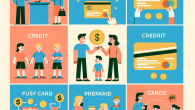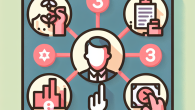
How to Move from Being ‘Bad With Money’ to Surprisingly Decent
How to Create Your First Budget: A Simple Beginner’s Guide
Hey there, future financial genius! I’m Tom Bradley—your down-to-earth financial friend who believes that budgeting doesn’t have to be scary, complicated or involve a whiteboard filled with equations. Whether you just got your first job or you’re finally ready to stop wondering where your money disappears every month, this guide is for you.
I’ll help you build your very first budget step-by-step and even add a few laughs along the way. So pour yourself a cup of coffee (or a celebratory soda), and let’s make your money work for you—not the other way around.
Why Budgeting Changes Everything
Before we dive into the “how,” let me drop some truth. Knowing how to budget is like having GPS for your finances. You may not need it all the time, but when you’re lost—or broke—it can save your tail.
With a budget, you can:
- Track where every dollar goes
- Stop living paycheck to paycheck
- Reach goals like saving for a trip or crushing your debts
- Avoid those awkward ‘card declined’ moments
Step 1: Know Your “Why”
Before throwing numbers on a spreadsheet, ask yourself: Why do I want to budget? Is it to avoid overdraft fees? Save for your dream car or first apartment? Or maybe you just want to stop stressing about money?
Your “why” is your compass. It keeps you on track when Netflix calls or when your favorite coffee shop is calling your name for the third time today.
Step 2: Calculate Your Income
This part’s easy. Line up all the money you actually receive in a month. That means:
- Your take-home pay (after taxes)
- Side hustle income
- Freelancing gigs
- Anything else Uncle Sam doesn’t consider “funny money”
Important: Focus only on money you can count on—don’t budget on money you “might” get. That’s how people end up living on ramen.
Step 3: List Your Expenses
This is where budgeting gets real. Let’s break expenses into two categories:
Fixed Expenses
- Rent or mortgage
- Utilities
- Car payments
- Insurance
- Subscriptions (be honest—how many streaming services do you really need?)
Variable Expenses
- Groceries
- Gas
- Restaurants
- Shopping
- Entertainment
Track at least one full month to understand your spending patterns. Apps like Mint, YNAB (You Need A Budget), or even a good ol’ spreadsheet work fine.
Step 4: Subtract and See Where You Stand
Take your total income and subtract your total expenses. The result will land in one of three zones:
- Surplus: You have extra money left. Fantastic! That cash can go toward savings, debt repayment, or investments.
- Balanced: You’re breaking even. Good start—but let’s work on getting you some breathing room.
- Negative: You’re spending more than you make, my friend. But don’t panic—we can fix that.
Step 5: Set Budget Goals That Don’t Suck
This is where budgeting gets personal. Spend some time thinking about what you want—and don’t be afraid to dream big. Some example goals:
- Build an emergency fund of at least $1,000 to start
- Pay off high-interest credit cards
- Save for a trip or a big purchase
- Invest in your future through a retirement account (yes, even $25/month counts)
Pick 1–3 goals and break them down monthly. Simple steps win the race here.
Step 6: Choose a Budgeting Method That Matches Your Style
Budgeting is not one-size-fits-all. Here are popular methods to explore:
1. The 50/30/20 Rule
- 50% of income goes to needs
- 30% to wants
- 20% to savings or debt repayment
Great for budgeting rookies who need flexibility but want structure.
2. Zero-Based Budget
Every dollar gets a job. If you make $3,000, you allocate all $3,000 somewhere—rent, bills, savings, entertainment. Nothing is left “unassigned.”
3. The Envelope Method (Digital or Paper)
Assign spending categories and “spend” only what’s in the envelope. When it’s empty, that’s it. Ideal for controlling variable expenses like eating out or shopping.
Step 7: Track, Adjust, Repeat
You built your budget—high five! But now comes the grown-up part: tracking your spending consistently. Set a weekly money check-in with yourself. Think of it like brushing your financial teeth.
If something goes off track (and it will), just adjust. No guilt. No shame. Budgets are living tools, not prison cells.
Budgeting Tips from Tom’s Toolkit
- Automate what you can: Bills, savings transfers, even budgeting reminders
- Review monthly: Use past months to adjust next month’s plan
- Use cash for tricky categories: Spending too much on dining out? Go old-school with cash envelopes
- Celebrate small wins: Paid off a $100 credit card bill? That’s progress!
Final Thoughts: Start Small, Stay Consistent
You don’t need a finance degree or perfect discipline to build a money plan that works. You just need a willing heart, a realistic plan, and a touch of patience.
Budgeting doesn’t mean cutting out fun—it means giving your goals the front seat. Spend with intention, save with purpose, and trust the process.
And hey, if you get stuck or overwhelmed, just revisit your “why.” You’ve got this. And if you need help, I’m always hanging around right here at Financeone.
Need Help or Have Questions?
Budgeting is just one part of building your financial future. If you need more personalized help or just want to say hey, feel free to contact us.
Now go forth and budget like you mean it.









Leave a Reply